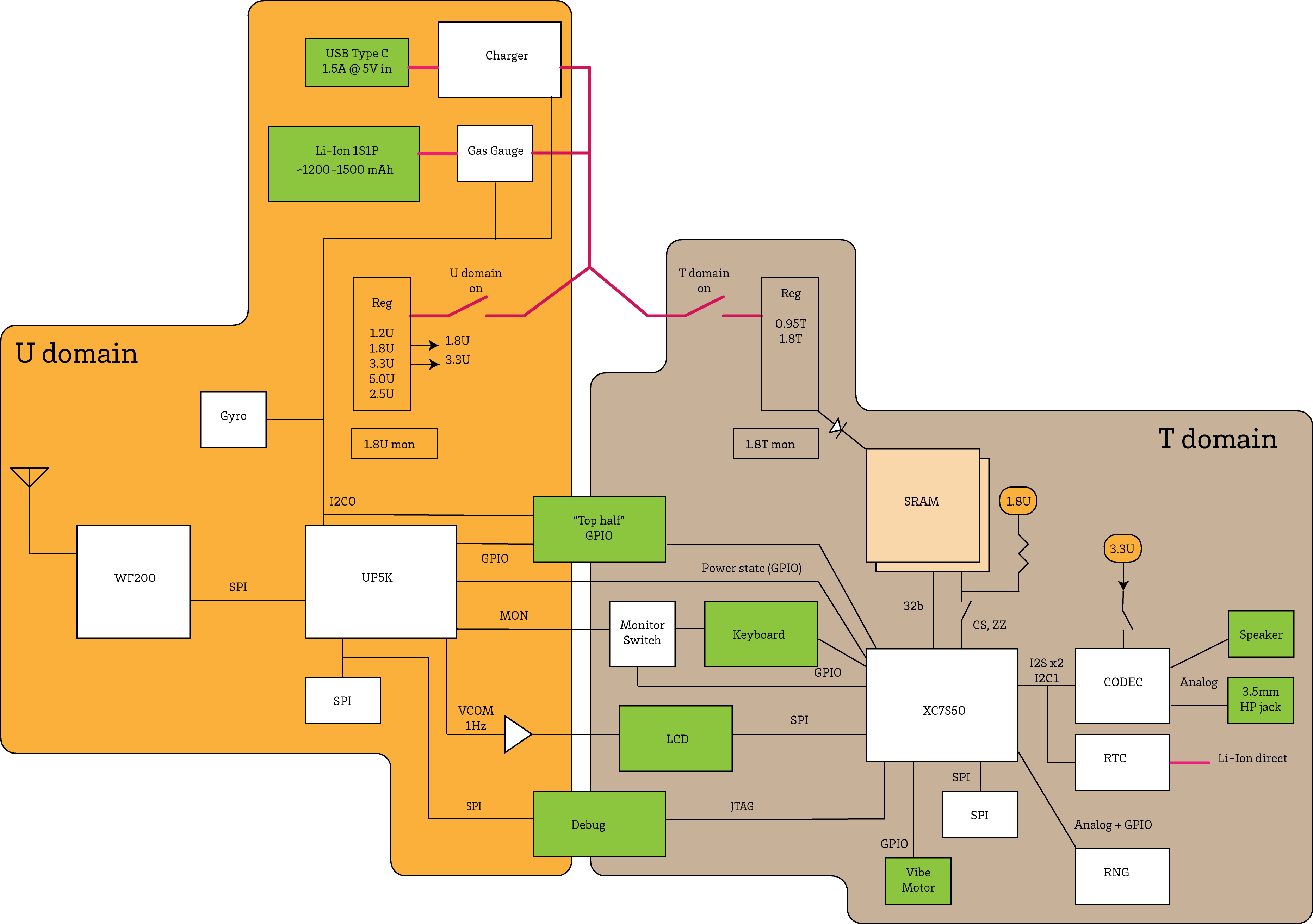Our Features
Development Plan
Big Picture
betrusted aims to create a hardware system that features a secure enclave tied directly to hardware input and output mechanisms that eliminate, as much as possible, the possibility of a MITM between the user and the secrets within the enclave. Signal’s double-ratchet protocol complicates the lives of network-snooping interlopers, but is still vulnerable to keyboard loggers and screen scrapers. betrusted should provide a simple solution for individuals in high-risk situations to not only secure their private keys, but also to secure the flow of information between the users and their private keys.
Plan
The final vision of betrusted is a much larger project than can be accomplished in a single product generation. In an ideal world, the project would encompass technologies that facilitate end-user verification of custom silicon. However, this vision might be a few years out; until then, our strategy is develop a system that operates inside an FPGA that can be self-sealed via on-chip eFuses.
Thus the general strategy is to take a three-step approach to system development:
-
Alpha Developer-oriented FPGA-based system. “Almost looks-like, works-like” prototypes in the form factor of a phone case. Priced in the few hundred dollar range, produced in small (100’s) quantities.
Primary focus is on vetting the code base and validating the ASIC design parameters. Concurrent variations testing several keyboard designs will also be evaluated. This phase is estimated to last roughly 2 years assuming resources afforded by a modestly successful crowdfunding campaign and adequate developer interest in the OS and UX aspects.
Phase 1 prototypes will be able to provide some measure of physical tamper resistance, to the level that the off-the-shelf FPGAs used are resistant to efforts to read out their security keys. The software should offer hermetic remote-exploit resistance at the software level even against APTs.
Phase 1 will iterate until the user experience is just right before moving to phase 2, because there is no second chance at phase 2. It will cost a couple million dollars to spin the custom SoC.
-
Beta Custom SoC-based system for early adopters. Priced in the $200-300 range, produced in sub-10k quantities. Tamper resistant, usable battery life, thin form factor that is easy to carry around in the form factor of a “phone case”.
Phase 2 validates HCI assumptions and physical form factor assumptions derived in phase 1 across a larger user base. As a result phase 2 aims to get into the hands of “early adopter” users and not just developers. This phase will either need an astonishingly successful crowdfunding campaign or the assistance of grants from foundations to complete. This phase is estimated to last roughly 2 years: 1 year for ASIC and product development; 6 months for post-tapeout ASIC validation; 6mos - 1 year for incorporating user feedback, depending on the scope of changes.
Phase 2 should also attempt to implement any physical mitigations required by the threat model for release hardware.
-
Release Consumer-ready system. Pricing will depend on demand. Production in 100k quantities should drive a shelf price in the $120-$180 range, with a potential for sub-$120 in 500k or higher quantities. This system takes the learnings from the first two phases and incorporates them into a truly “user-ready” experience.
Threat model for release hardware
The device itself should be hardened against evil maid attacks by a well-prepared adversary with temporary access to the hardware, but may not be hardened against an adversary with unlimited physical access to the device. In other words, should an attacker have access to a device for several hours in a well-equipped lab, but the device needs to be returned to the owner in a functional state (but perhaps with significant evidence of tampering), no secrets should be divulged as a result of said analysis. In other words, with high likelihood any successful attempt to recover secrets from a device with direct physical access should leave the device in a state where naked-eye visual inspection can detect evidence of tampering.
However, should an attacker have unlimited access to the device and can perform destructive measurements on the device, secrets may be divulged (such as attacks that require direct access to the silicon die). However, in this scenario the device owner should at least be aware of the compromise once the device is returned.
The RTL of the ASIC will be open for inspection, but due to the secrecy restrictions imposed by ASIC vendors the entire chip will not be inspectable as a mask-level blueprint (besides, there is a TOCTOU on the mask design – no guarantee that the mask design submitted for inspection matches the mask design that was actually printed by the fab). Instead, the RTL shall be hardened against potential “hard-IP” exploits with hardware ASLR. See ASIC hardening for more details.
Navigation
- Betrusted
- HCI Rationale
- Betrusted Architecture
- Development Plan
- Avalanche Noise Source Design




